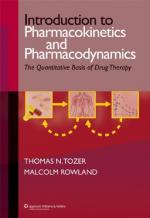|
This section contains 461 words (approx. 2 pages at 300 words per page) |

|
The study of the mechanism of drug actions is called pharmacodynamics. Most (but not all) drugs exert their action by binding to specific RECEPTORS. This binding may initiate changes that lead to the characteristic effects of the drug on body functions.
A central question in drug therapy (medication) is the proper dose of the drug that produces a desired action without many harmful side effects. To clarify this problem, pharmacologists analyze the relationship between dose and response. Most dose-response curves are sigmoidal (shaped like an S).
 The peyote cactus, from which is derived the hallucinogenic mescaline. (Drug Enforcement Administration)
The peyote cactus, from which is derived the hallucinogenic mescaline. (Drug Enforcement Administration)
|
This section contains 461 words (approx. 2 pages at 300 words per page) |

|


